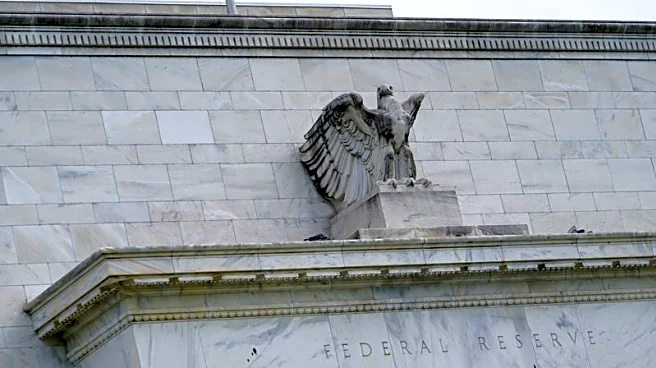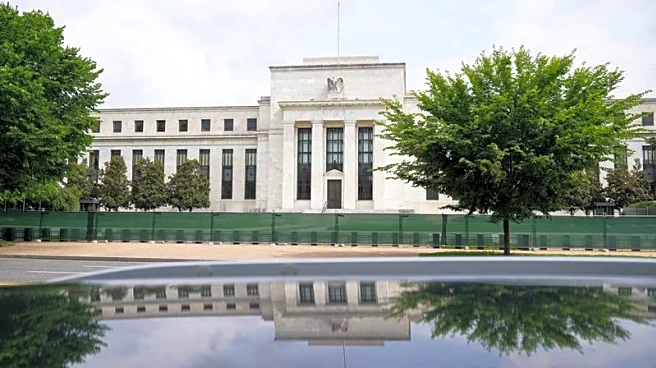What's Happening?
The Federal Reserve is anticipated to lower its key interest rate during its upcoming policy meeting on October 28 and 29. This decision is driven by the need to reduce borrowing costs and support the struggling
job market. The expected rate cut, predicted to be a quarter of a percentage point, would bring the federal funds rate to a range of 3.75% to 4%, marking the lowest level since December 2022. The move comes as job growth has nearly stalled due to rising tariffs and increased consumer prices. The Fed's decision is seen as a response to these economic pressures, with a 97% probability of the rate cut already priced into financial markets.
Why It's Important?
The Federal Reserve's decision to cut interest rates is significant as it aims to stimulate economic growth and prevent a surge in unemployment. Lower interest rates can encourage borrowing and investment, potentially boosting consumer spending and business expansion. However, the move also reflects underlying economic challenges, such as trade tensions and inflationary pressures, which have impacted job growth and consumer budgets. The rate cut could provide temporary relief to the economy, but it also highlights the ongoing vulnerabilities and uncertainties facing the U.S. economic landscape.
What's Next?
Following the anticipated rate cut, the Federal Reserve will likely continue to monitor economic indicators closely to assess the effectiveness of its monetary policy. The decision may prompt reactions from various stakeholders, including businesses, investors, and policymakers, who will be evaluating the impact on economic growth and employment. Additionally, the Fed's actions could influence future fiscal policies and trade negotiations, as the government seeks to address the broader economic challenges.
Beyond the Headlines
The Federal Reserve's decision to cut interest rates raises questions about the long-term sustainability of such measures in addressing economic challenges. While lower rates can provide short-term relief, they may also lead to increased borrowing and potential asset bubbles. Furthermore, the reliance on monetary policy to stimulate growth underscores the need for comprehensive fiscal strategies to address structural economic issues, such as trade imbalances and workforce development.













